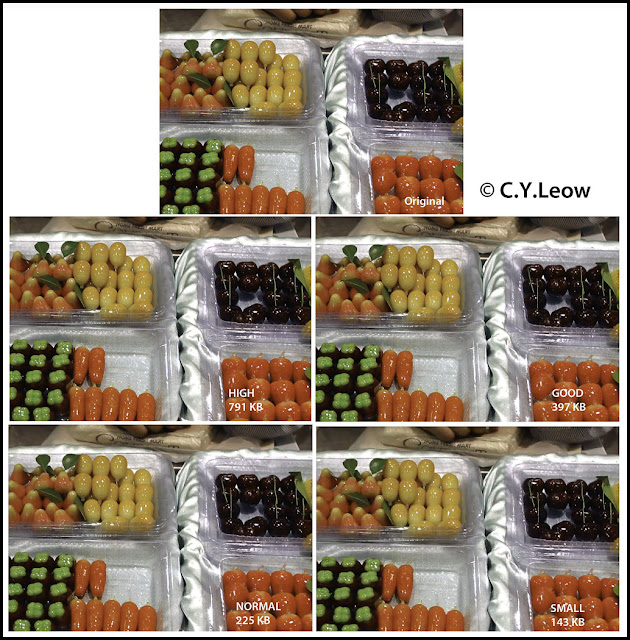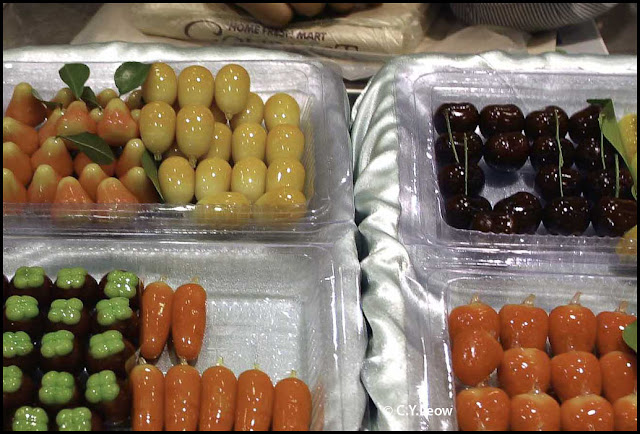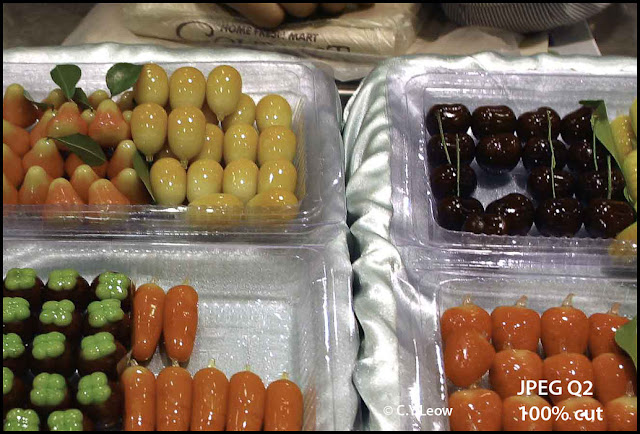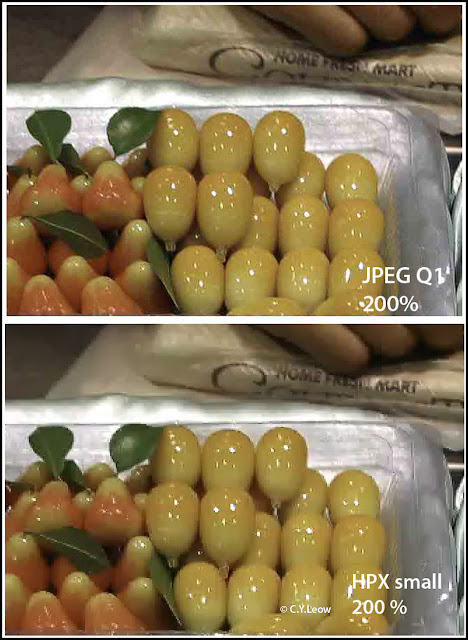" I am connected with Human Monitoring. I enjoyed reading your post, and we'll definitely examine your suggestions.
One comment: Please try coding your highest quality picture to Hipix without degrading it first by compressing it to JPEG. Go from 16+MB to (I suggest High, Good or Normal presets) and then examine the result.
Hipix is most effective with images which do not contain noise. If you code an image low size JPEG you insert artifacts, which Hipix treats as data, and the compression is less effective."
What HM spokesperson do not realised was my test file was a Camera Raw file and after ACR, became a 16 bit TIFF file.
So how do I get around "without degrading it first by compressing it to JPEG"? Catch 22?
After squeezing my grey matter for a bit, I concluded that Hipix can only support BMP as source file! I proceed to convert my TIFF test file to BMP with Photoshop CS5.
Since I never done this before, (tell me, how many photographer shoot in BMP?) the Photoshop BMP dialogue is strange to me ;)
 But by using the "Advanced Modes" and saving as 32 bit X8-R8-GB-B8 can't be far wrong ;) and the BMP look great!
But by using the "Advanced Modes" and saving as 32 bit X8-R8-GB-B8 can't be far wrong ;) and the BMP look great!
I then launch HipixWiz and convert the BMP to four HPX on four different settings. Here are the different sizes according to setting:
High - 791 KB GOOD - 397 KB NORMAL - 225 KB SMALL - 143 KB
And that is from a whopping 18 MB file, impressive to say the least!
But what about quality?
I then open and save all four files with the HipixViewer and save the files back to their original 18 MB BMP format.
Here are the "cuts":
 You got to click for a larger view to get a better idea HOW CLOSE all the files look!
You got to click for a larger view to get a better idea HOW CLOSE all the files look!Compare to the original, there are difference in colour and resolution of course; but the differences are so small, they are insignificant! Bloody good job I would say ;)
Now, if only they can do 16 bit TIFF files :)
Side Line:
A reader made this comment in the Hipix story at the Photography Blog...
"The Corel JPEG examples are deliberately degraded to make Hipix look good. The Corel version of the originally good images must have been converted down to about 8 colours from 8bit (256 colours) to get so much posterization and banding to make the Hipix versions look so good by comparison.
If the Hipix solution works better than Adobe JPEG or JPEG 2000, good on them! But why resort to such cheap tactics in the demo!? I wouldn't buy a product from a company that resorts to such cheap tricks."
Ouch! Not surprising, HM's Principal Hipix Architect, Ilya Bogin, responded:
"The low quality level compression of JPEG(Q<5)> Take any large image(>12MP) and save it to JPEG with Q=4."
I did JUST THAT and I end up with a Q4 JPEG file of 520 KB, this is the 100% cut:
 Q4 JPEG, 100% cut; well... strangely enough, still look good to me :)
Q4 JPEG, 100% cut; well... strangely enough, still look good to me :)Let's go even lower! How about Q2!
 Eh? Still look acceptable to me! Where is the banding?
Eh? Still look acceptable to me! Where is the banding?What about Q1, I wonder? I just cannot resists not doing! ;)
Cut from the Q1, 340 KB file:
 Eh!?? I don't know how to tell you this, HM; Sir, the Q1 100% still look OK!
Eh!?? I don't know how to tell you this, HM; Sir, the Q1 100% still look OK!May be we do not realise HOW FAR the humble JPEG has come? May be we underestimate how good or rather how well Adobe Photoshop handle JPEG?
I am floored!!!!!
Catch 22!
Go figure :)
Famous Last Words:You might think that JPEG won the test, no it did not because even at Q1 the file size is still 340 KB against 143 KB of Hipix small setting! Even at that setting, Hipix look better in resolution and colour!
So BRAVO, Human Monitoring; you are onto something there... keep it up!!
LATEST!!Just out of curiosity, I did a 200% slice from the Q1 JPEG and Hipix small for comparison. I found something strange! Take a look!
 At that magnification, the Q1 JPEG LOOK SHARPER! Eh? Can someone explain that?
At that magnification, the Q1 JPEG LOOK SHARPER! Eh? Can someone explain that?The plot thickens!!
** Latest news:
Human monitoring just respond to my posting, look out for my follow-up story! :) - Oct 11, NZ 9.55 PM -
Human Monitor Response!

No comments:
Post a Comment